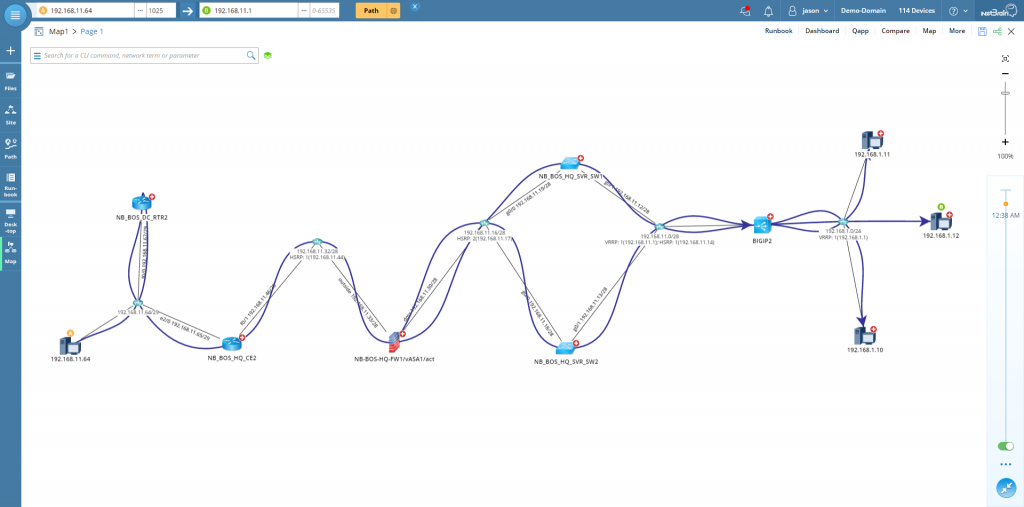DORA: What Financial IT Must Know
The Digital Operational Resilience Act (DORA) entered into application across the European Union on 17 January 2025, reshaping how financial institutions manage cyber and operational risk [1]. Although the United...
When outages happen, all eyes are on the network. But without up-to-date documentation, tracking the root cause often means piecing together information manually, one device at a time. Even simple questions about where traffic is going can be surprisingly difficult to answer in complex, hybrid environments.
An A/B path calculator eliminates that guesswork by visually mapping the exact flow of traffic between any two points. It gives teams the clarity they need to understand dependencies, verify policies, and respond faster when every second counts.
One of the keystone features of the NetBrain network automation platform, the A/B Path Calculator, can help you solve problems in a fraction of the time it takes without the automatic traffic path calculations.

The sole purpose of a network is to pass traffic between two or more points. Any conversation involving a networking issue needs to begin with the question “What is the critical path?” or, in other words, “Where does my traffic need to travel to be useful?”
When issues arise, understanding this path helps network engineers pinpoint where the breakdown is happening. It also clarifies whether the problem lies in the network or elsewhere, like an application or security layer.
Lack of accurate documentation during a network outage is every engineer’s worst-case scenario. When a business-critical application goes down, we usually suspect the network, whether or not it is the cause. In one such incident, poor documentation forced engineers to retrace network paths manually, just to understand where the failure occurred. The root cause was a misaligned segment and a firewall rule blocking legitimate traffic. Engineers could have resolved the issue in minutes with the A/B path calculator from NetBrain.
The A/B Path Calculator is essentially a very enhanced traceroute, which is meant to remove its limitations. It determines the network path by examining access lists, network address translation, policy routes, and other elements not covered by standard command-line tools. The A/B Path Calculator effectively maps specific protocols and applications across the network, detects asymmetrical paths, and gathers both Layer 2 and Layer 3 data.
Troubleshooting is about figuring out where the problem is. Traditional tools offer limited insights, especially in complex networks. The A/B Path Calculator removes this blind spot. Providing a real-time view of the traffic flow and alerts on where and why traffic is blocked helps network teams act faster and more precisely. With NetBrain, engineers can generate A/B paths in seconds, with each map adapting dynamically to the specific application.
The A/B Path Calculator delivers the insight engineers need to respond confidently and precisely during live incidents or in preparation for future ones. Even outside of emergencies, the A/B Path Calculator helps engineers document and understand application flows across the network. It identifies policy conflicts, misconfigurations, and routing anomalies early, before they cause outages or degrade performance.
By continuously analyzing these dependencies, engineers can detect subtle issues, ensure compliance, and streamline troubleshooting. This proactive insight empowers network teams to maintain optimal network health and respond swiftly to emerging challenges, rather than reacting after failures.
Leverage the A/B Path Calculator and other tools within the NetBrain platform for mapping and network path analysis, reducing troubleshooting time, and improving network visibility. Schedule a demo today to see how NetBrain can support your network operations.